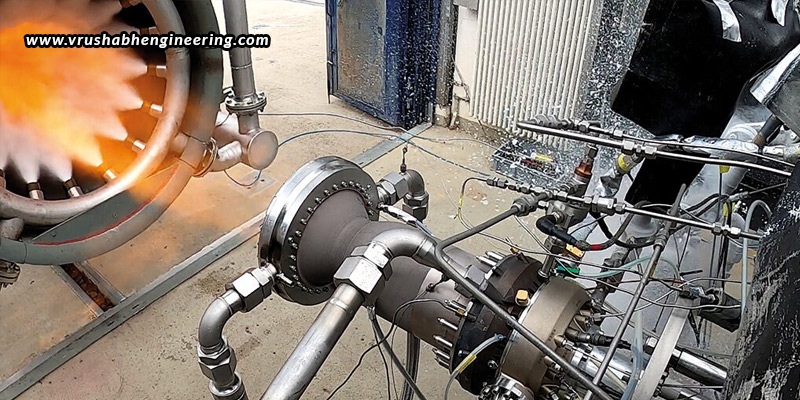In the realm of sealing technology, conventional standards are no longer sufficient. As industries like aerospace, energy, and cryogenics evolve, gaskets must now endure extreme conditions, ranging from cryogenic temperatures near absolute zero, to sealing components in supercritical systems that operate under significant pressure and heat. This shift necessitates innovative advancements in gasket materials and designs. In this blog, we delve into how engineers are addressing these extreme conditions, the challenges they face in such environments, and how state-of-the-art solutions are transforming sealing capabilities.
Understanding extreme conditions
Cryogenic environments
Cryogenic systems function at temperatures typically below -150°C (-238°F), commonly encountered in liquefied natural gas (LNG) transport, medical applications involving liquid oxygen or nitrogen, and space exploration. These frigid temperatures introduce distinct sealing challenges, such as material contraction, which can lead to compromised seal integrity due to severe shrinkage; embrittlement, where certain materials lose their elasticity and become fragile at low temperatures; and issues of outgassing and leakage, where gasket materials must maintain tightness even in vacuum conditions or when gas permeability is elevated.
Supercritical systems
Supercritical fluids, like supercritical CO₂, exist above their critical point and display characteristics of both gases and liquids. These fluids are utilized in processes such as extraction, power generation, and enhanced oil recovery, often at temperatures exceeding 350°C (662°F) and pressures above 3,000 psi (200+ bar), along with exposure to corrosive or reactive substances. Such extreme environments demand specialized gasket solutions engineered to endure high pressures, elevated temperatures, and chemical reactivity, ensuring dependable sealing performance in essential applications.
Challenges in gasket design for extreme applications
Gasket design for demanding applications encounters numerous challenges, such as thermal cycling, which requires seals to withstand repeated expansion and contraction without suffering damage. This can lead to issues like gasket relaxation or compression set, increased flange movement that heightens the risk of leaks, and mechanical fatigue. Another significant concern is material degradation, as extreme temperatures can hasten chemical breakdown; for instance, elastomers may become rigid in cryogenic environments, while organic compounds in supercritical systems may decompose or become reactive. Furthermore, mechanical stresses from high pressure and clamping forces can cause problems like creep, extrusion, or blowouts if the material or gasket design is not adequately optimized for these conditions.
Materials leading the charge
- Metals: Metallic gaskets are known for their exceptional structural integrity, making them suitable for high-pressure and high-temperature applications. They can be customized with soft fillers such as graphite or PTFE and perform effectively in cryogenic environments when constructed from materials like Inconel or stainless steel.
- PTFE: Polytetrafluoroethylene (PTFE) is recognized for its outstanding chemical resistance, low permeability, and durability at extremely low temperatures, making it ideal for cryogenic applications. It can withstand temperatures up to 260°C in supercritical systems and is resistant to corrosive substances. Variants like filled PTFE (with materials such as glass or graphite) enhance its mechanical strength.
- Elastomers: Certain elastomers, including specific fluorosilicates and perfluoro elastomers, provide improved flexibility at low temperatures, although they typically have limitations in extreme cryogenic conditions.
- Graphite: Graphite can endure temperatures exceeding 500°C while maintaining seal integrity during thermal cycling due to its compressibility and ability to recover. It is inert to most substances, including supercritical fluids, ensuring dependable performance in extreme settings.
- Composite materials: Composite materials, which integrate metal cores with non-metallic sealing surfaces, are increasingly favored for their enhanced stress distribution capabilities, customized performance across diverse temperature and pressure conditions, and their resistance to mechanical creep and blowout.
Design innovations in extreme gasket applications
Low-temperature seal design
In cryogenic settings, the design of low-temperature seals is refined to ensure consistent compression despite material contraction. This involves the use of thicker cross-sections, spring-energized seals that retain their force even as temperatures decrease, and specially designed grooves that mitigate thermal contraction, thereby guaranteeing a dependable seal in harsh environments.
Gaskets for supercritical applications
Gaskets intended for supercritical applications are engineered to withstand blowout and creep under high pressure. This is achieved through the implementation of reinforced graphite gaskets featuring metallic tang layers, as well as spiral-wound gaskets that utilize optimized winding tension and carefully selected fillers, ensuring effective sealing in high-pressure and high-temperature scenarios.
Finite Element Analysis
Finite Element Analysis (FEA) tools are employed to model pressure distribution across flanges, assess material deformation due to thermal and mechanical stresses, and evaluate long-term relaxation and creep characteristics. This allows engineers to validate gasket designs digitally prior to physical testing, ensuring enhanced performance in extreme conditions.
The process of designing gaskets for cryogenic and supercritical systems has evolved beyond mere pressure sealing; it now focuses on engineering resilience at the molecular level. Utilizing materials such as graphite and PTFE, along with advanced composites and intelligent sensors, gasket technology is evolving to meet the challenges of contemporary industry. Whether it involves sealing a cryogenic storage tank or managing a high-pressure extraction system, gaskets play a crucial yet often overlooked role. As industries continue to explore extreme conditions, it is evident that the future of sealing will hinge not only on strength but also on intelligence, adaptability, and innovation.
Looking for gasket solutions built for extremes? Get in touch with Vrushabh Engineering, one of the top gasket manufacturers in India, to discover custom gasket options specifically crafted for cryogenic, high-temperature, and high-pressure applications. Whether you need gaskets for demanding environments such as LNG transport, space exploration, or supercritical systems, Vrushabh Engineering delivers bespoke solutions that guarantee durability and performance in the toughest situations. Emphasizing high-quality materials and innovative designs, these gaskets are engineered to offer exceptional sealing capabilities, preventing leaks and ensuring dependable operation across various industries.
Resource: Read more
